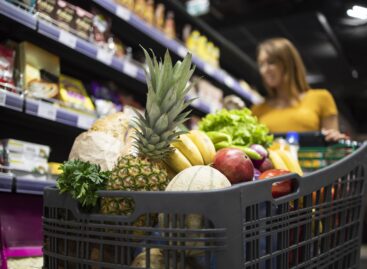January was surprisingly good for retail
Compared to the weak end of the year, retail sales increased by 2.2%, which is a very high monthly change. This can be attributed mostly to the non-food category, as most shoppers probably took advantage of the early-year discounts after the holidays. On a fixed basis, we managed to exceed the 2021 average level by 1.9%. Compared to the beginning of last year, we bought more food and non-food products, and due to the low base, this is expected to be the case in February data as well.

Rising real wages may further help the sector, but rising inflation, which strongly affects the food category, poses a risk. According to confidence indices, trade is still the most pessimistic sector, and consumer confidence stagnated in February. In the longer term, government measures such as the doubling of the social security tax credit for children, the social security tax exemption for some mothers, and the VAT refund for pensioners may further strengthen retail sales.
Retail performance:
Based on seasonally and calendar-adjusted data for January, retail sales volume increased by 2.2% compared to the previous month. The monthly growth was driven by the non-food and fuel categories (2.8% and 2.7%, respectively), while the food category expanded by 0.5%. The current figure is above the average for 2021 (+1.9%), which, contrary to the seasonal pattern, represents a strong start to the year.
Retail turnover, real wages and consumer confidence
On an annual basis, there was a 4.7% expansion, which was also influenced by a favorable base effect, which will continue to be felt in February. The growth was driven by the non-food category (+5.2%), with almost all types of stores able to expand their turnover.
The beginning of the year usually (as last year) produces weaker turnover after the holiday spending. However, this time the December surge was missed, this effect appeared in January. Based on the data for the food category, consumers continue to follow the purchasing habits they adopted due to the rising price level, while in the case of the non-food category, most buyers probably took advantage of the price reductions at the beginning of the year after the holidays. It is also possible that we are also seeing the effect of a positive correction after the long holiday period at the end of December (which could have pulled down turnover in the last month of the year). Based on current data, there is a chance that consumption will again reach a higher level, as it did in the first quarter of 2024.
Related news
Holiday spending trends: affordable gifts, experiences and premium foods take center stage
🎧 Hallgasd a cikket: Lejátszás Szünet Folytatás Leállítás Nyelv: Auto…
Read more >Retail sales in Germany fell in October
🎧 Hallgasd a cikket: Lejátszás Szünet Folytatás Leállítás Nyelv: Auto…
Read more >OKSZ’s commentary on the latest inflation data
🎧 Hallgasd a cikket: Lejátszás Szünet Folytatás Leállítás Nyelv: Auto…
Read more >Related news
Recent research: Hungarians believe these are essential parts of Christmas
🎧 Hallgasd a cikket: Lejátszás Szünet Folytatás Leállítás Nyelv: Auto…
Read more >More than 5 million forints donated as a result of the charity wine auction
🎧 Hallgasd a cikket: Lejátszás Szünet Folytatás Leállítás Nyelv: Auto…
Read more >Lidl, Novartis and HungaroControl are also among the best places to work
🎧 Hallgasd a cikket: Lejátszás Szünet Folytatás Leállítás Nyelv: Auto…
Read more >






